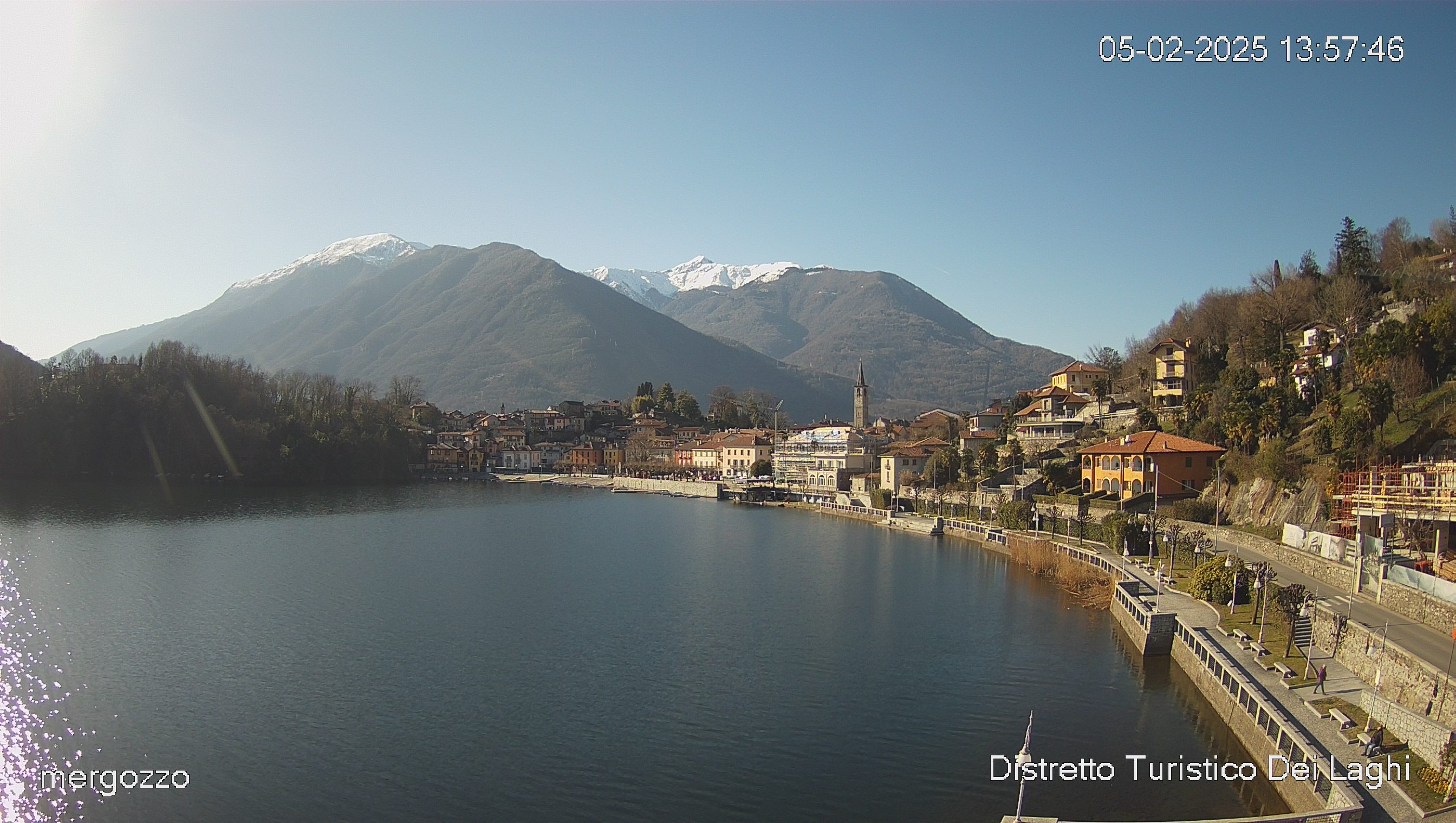Mergozzo - Small town of excellence
Recognitions
ITC Orange Flag
Altitude
196 a.s.l.
Patron Saint
15 August, Holy Mary of the Assumption
Market Dayo
Tuesday
Tourist Information
www.comune.mergozzo.vb.it
THE VILLAGE: CHEST OF CULTURE, TRADITIONS AND NATURE
Lake Mergozzo is a peaceful spot just a few kilometres from the point where the River Toce meets Lake Maggiore, from where this small, pretty stretch of water originated between five and six centuries ago. The village of Mergozzo, perched on the shores of its lake and nestled between the first Ossola mountains, has been awarded the Orange Flag label. Prehistoric remains found on the surrounding hills show that humans settled there at least 5000 years ago. Thanks to its position as a transit point between the plains and the Alps - it is known as the "gateway to the Ossola" - Mergozzo assumed decisive importance in Roman times. Archaeological traces from the Stone Age to Roman times are preserved in the Civic Archaeological Museum. The beautiful square by the lake is home to the Vecchio Olmo (Old Elm), a centuries-old tree with a now hollow trunk that is the undisputed symbol of the town and has been recognised as a "monumental tree of Piedmont" for its historical, natural and cultural value. From the square, you reach the central Via Roma, the picturesque Ruga and the narrow cobbled alleyways that criss-cross the village open onto charming little squares. Along the main street you find the 17th-century Parish Church of the Assumption, preceded by a solemn staircase and flanked by a portico sheltering the 19th-century Way of the Cross, and the 12th-century Church of Santa Marta in pure Romanesque style. The "Scarpia", a long flight of steps carved into the rock and dominated by the remains of the castle (Casaforte), leads to the characteristic hamlet of Sasso, the oldest part of the village in a dominant position overlooking the lake. Here you can admire the typical stone houses and the Oratory of Santa Elisabetta (1623), with its small granite bell tower housing the oldest bell in the lower Ossola (1669). Mergozzo lies in the shadow of Montorfano, a 794-metre granite block that can be reached on foot from the Sasso, along the "Sentiero Azzurro". The granite extracted from the open quarries on this mountain was used for the construction of important monuments, such as the columns of San Paolo Fuori le Mura in Rome. The aforementioned Archaeological Museum, which is also home to the Montorfano Granite Ecomuseum, describes the history and processing of this material, which strongly belongs to the local cultural and economic identity. Montorfano is home to one of the most interesting examples of Romanesque architecture in the area: the Church of San Giovanni Battista, dating from the 11th-12th centuries but founded on the remains of an even older place of worship dating from the 5th-6th centuries. From here you go up through the houses to the Belvedere, a panoramic balcony overlooking Lake Maggiore and the Borromeo Gulf. The Cadorna Line, a section of which can be seen on Montorfano, is an imposing military system created by General Luigi Cadorna during the First World War to defend the Italian border near Switzerland. The bunkers and trenches, which were never actually used in the war, stand today along a trekking route and retain an important historical value. Approximately 2.5 km long, Lake Mergozzo boasts crystal-clear waters with a ban on motorboats, an ideal habitat for many varieties of fish and small fauna, such as the Oxygastra curtisii, a rare dragonfly indicative of environmental quality. The lake is also known for its family-friendly beaches, boating and fishing. Mergozzo, with its many hamlets - Bracchio, Candoglia, Albo, Bettola and Nibbio - is located at the foot of the Val Grande National Park, whose broad ridge of rugged peaks, rocks and dense woods can be admired from the village. Finally, it borders Fondotoce and the Canneti Nature Reserve, which stretches luxuriantly between water and land belonging to the Ticino and Lake Maggiore Protected Areas.
Typical food and wine
Fugascina is the typical biscuit of Mergozzo: a fragrant shortcrust pastry, baked and cut into squares with an irresistible flavour. Historically, it was prepared during the celebrations of Santa Elisabetta, when families used to go to the bakery to bake sweet homemade focaccia and donate an offering to the church, while today it is prepared every morning by the village baker. The traditional 4th of July festival, centred around the little church and square of Sant'Elisabetta "al Sasso", is the most important event in Mergozzo, when the Fugascina fills the streets with its intoxicating aroma among music, praise and song.
Hospitality
www.distrettolaghi.it/en/ospitalita
Trekking Routes
Recommended Treks: Lake Mergozzo: MERGOZZO - MONTORFANO and Historic Mountain Roads: Linea Cadorna
Bike Routes
Recommended Bike Routes: DEL TOCE CYCLE ROUTE, cycling among the flowers and Mergozzo and the Montorfano
Handicrafts
The "Veneranda Fabbrica" (Venerable Factory) of Milan’s Duomo extracted the precious white-pink marble for the construction of the famous cathedral in Milan from the quarries in Candoglia, a hamlet of Mergozzo, starting in 1387, by concession of Duke Gian Galeazzo Visconti. Thanks to the hard work of the "picasass", quarrymen in the local dialect, the heavy blocks of stone were cut and extracted, then loaded onto large rafts anchored along the River Toce, from where they set off on a journey along Lake Maggiore, the Ticino and the Navigli to finally reach the centre of Milan. The quarry, with its corridors, is still active today for conservation and restoration work: when a piece of the Duomo deteriorates, it is replaced with an identical piece, carved from a new block of marble extracted in Candoglia and worked by the skilled hands of the Fabbrica's stonemasons.
Archivio Fotografico Distretto Turistico dei Laghi
Foto di Marco Benedetto Cerini













